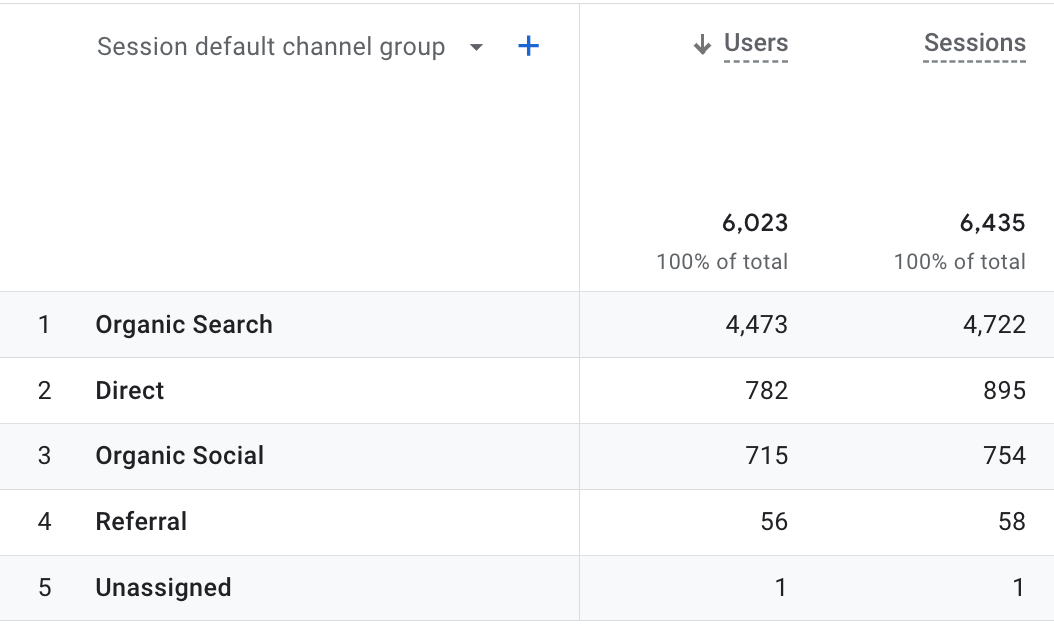Grasping the 'Secondary Dimension' in Google Analytics: Complete Summary
Grasping the 'Secondary Dimension' in Google Analytics: Complete Summary
Blog Article
Translating the Relevance of Secondary Dimension in Google Analytics: Everything About Its Importance and Effect
In the realm of digital analytics, the application of additional dimensions within Google Analytics acts as a pivotal device for discerning much deeper layers of information insights. The significance of secondary dimensions hinges on their capability to give a nuanced sight of customer habits and communication with a site or system. By studying data beyond surface-level metrics, businesses can open a wide range of details that shapes tactical decisions and improves advertising and marketing efforts. This expedition right into the realm of additional measurements not just offers a comprehensive understanding of individual engagement yet likewise sheds light on the intricate characteristics that drive on-line performance.
Understanding Additional Measurements in Google Analytics
The understanding of additional measurements in Google Analytics is essential for obtaining deeper insights right into individual behavior and web site performance. While key dimensions give essential information factors such as website traffic resources and page sights, second measurements enable a much more nuanced evaluation by offering extra context to these main metrics. By including second measurements, individuals can sector and filter their data to reveal patterns and fads that might not be promptly noticeable.

Revealing the Perks of Second Measurements
Building upon the fundamental understanding of second measurements in Google Analytics, checking out the advantages they use reveals vital insights for improving data evaluation and decision-making. By including second dimensions, individuals can dive much deeper into their information, gaining an extra extensive view of individual actions, content efficiency, and other key metrics.
In addition, additional dimensions supply context to primary data, providing additional layers of info that can help in recognizing user interactions and choices. This enhanced understanding can assist critical decision-making, bring about even more targeted advertising and marketing campaigns, site optimizations, and overall improved efficiency. Fundamentally, secondary dimensions function as a powerful tool for unlocking much deeper insights and maximizing the energy of Google Analytics for businesses and internet site proprietors.
Leveraging Secondary Measurements for Boosted Insights
By utilizing the power of second measurements in Google Analytics, companies can reveal much deeper understandings that drive informed decision-making and tactical optimization initiatives. Leveraging additional dimensions permits companies to dig past surface-level information and get a much more comprehensive understanding of customer behavior, audience demographics, traffic sources, and web site efficiency. By incorporating main dimensions like traffic resources with secondary measurements such as geographic location or device group, businesses can recognize which regions or tools are driving the most beneficial traffic to their internet site.
Additionally, second dimensions make it possible for companies to section and analyze information better, assisting them determine trends, patterns, and opportunities that may have or else gone undetected. By utilizing second dimensions, organizations can customize their advertising techniques, web content, and user experience to much better satisfy the requirements and preferences of their target audience. In significance, leveraging secondary dimensions in Google Analytics encourages organizations to make data-driven decisions that result in enhanced efficiency, raised ROI, and sustainable growth.

Impact of Second Dimensions on Information Analysis
Enhancing data analysis via the utilization of secondary measurements in Google Analytics supplies services with a deeper understanding of their online efficiency metrics. By including additional dimensions, such as time of day, geographic area, or device classification, services can uncover beneficial insights that may have been overlooked with key measurements alone. This boosted degree of granularity enables even more accurate division of data, allowing services to recognize patterns, trends, and relationships that can drive strategic decision-making.

Maximizing Prospective: Additional Capacities Methods
The critical utilization of second measurements in Google Analytics extends beyond improving data evaluation; it includes crafting targeted approaches to unlock the complete capacity of important insights for company development. By using additional measurements successfully, organizations can delve deeper right into their web site traffic, user actions, and marketing projects to extract actionable understandings. One key approach is to combine secondary measurements with look at these guys key measurements to obtain a thorough view of customer interactions. Matching the main dimension of 'source/medium' with additional dimensions like 'touchdown page' or 'device category' can reveal which channels are driving traffic to particular web pages or exactly how individual actions differs throughout devices.
In addition, using additional dimensions to section information based on individual demographics, actions, or innovation can aid organizations tailor their advertising initiatives to details target market segments. This targeted method can cause improved conversion prices, enhanced individual experiences, and inevitably, raised ROI. By optimizing the capacity of secondary measurements in Google Analytics, businesses can make educated decisions, maximize their on the internet existence, and drive sustainable development.
Conclusion
In final thought, second dimensions in Google Analytics play a crucial function in providing deeper insights and boosting information evaluation. Including additional dimensions right into data evaluation methods can lead to more educated decision-making and boosted total efficiency.
While primary measurements give fundamental information factors such More about the author as traffic resources and page sights, second dimensions allow for a much more nuanced analysis by offering extra context to these primary metrics. By combining primary measurements like web traffic sources with secondary measurements such as geographic place or gadget category, businesses can recognize which gadgets or areas are driving the most important traffic to their internet site.
By integrating secondary dimensions, such as time of day, geographical place, or tool group, services can discover beneficial understandings that may have been forgotten with key dimensions alone. One key method is to incorporate secondary measurements with key measurements to acquire a thorough view of customer communications. Pairing the primary measurement of 'source/medium' with secondary dimensions like 'touchdown page' or 'gadget category' can reveal which networks are driving website traffic to specific pages or how individual behavior differs across devices.
Report this page